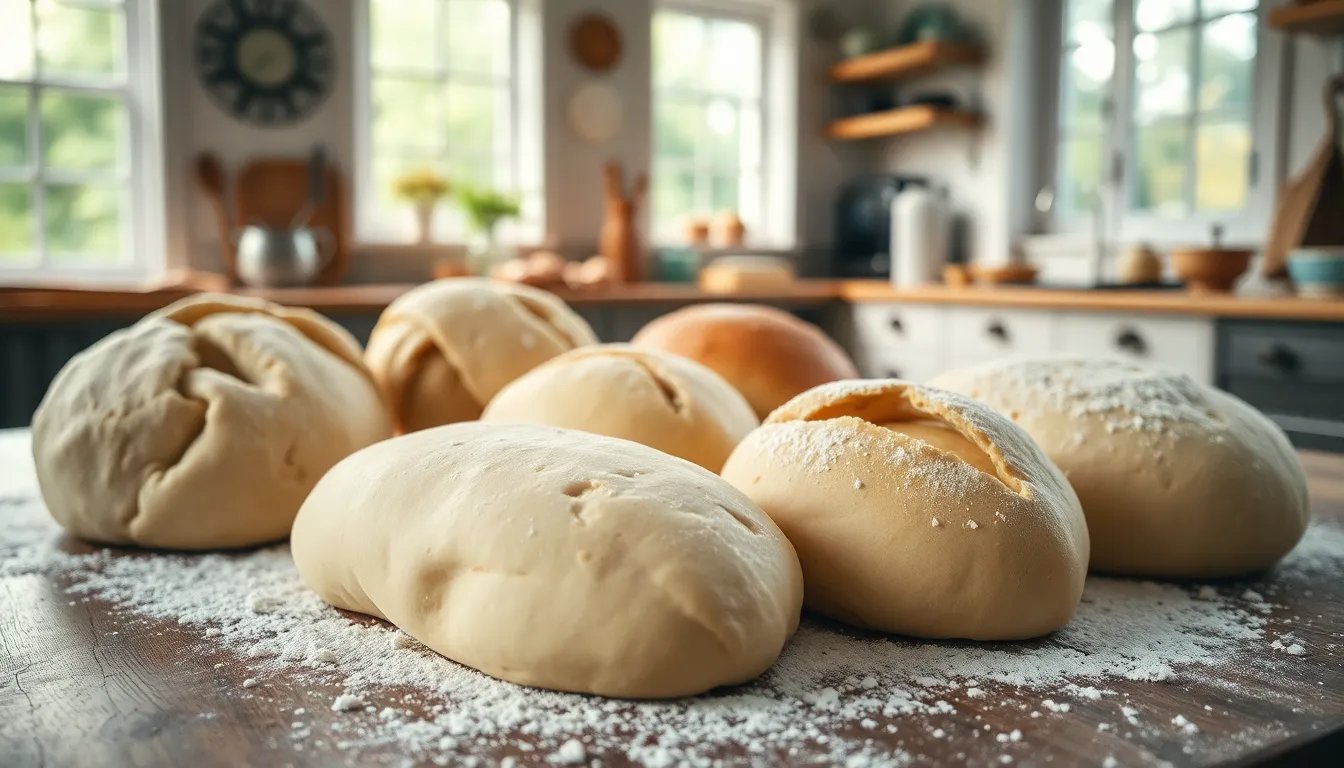Baking enthusiasts know that the secret to perfect dough lies in the delicate balance of ingredients and techniques. But when it comes to awakening that sleepy dough, how many fragments does it really take? Spoiler alert: it’s not about tossing in a handful of flour and hoping for the best.
Table of Contents
ToggleUnderstanding Dough Fragments
Dough fragments play a crucial role in the process of reviving dough. These small pieces significantly impact the overall texture and quality of the final product.
Definition of Dough Fragments
Dough fragments refer to the small bits of dough that exist when a batch becomes overworked or improperly mixed. These fragments can occur when too much flour is added or when the dough is not kneaded adequately. Identifying these fragments helps bakers understand the state of their dough and how to adjust the mixing process for improved results.
Importance of Dough Fragments
Recognizing the significance of dough fragments is essential for successful baking. When fragments are present, they indicate that the gluten structure may not be properly developed, leading to a dense and unyielding texture in bread or pastries. They also signal the need to integrate moisture and fat effectively to restore the dough’s pliability. Addressing dough fragments ensures an even rise and enhances the overall flavor profile of the baked goods.
Factors Affecting Fragment Awakenings

Different elements play a role in how fragments awaken dough. Understanding these factors is vital for achieving the ideal texture and quality in baked goods.
Type of Dough
Dough types greatly influence fragment awakening. For instance, bread dough typically requires more gluten development compared to pastry dough. Dense doughs build a stronger structure that can better integrate fragments. In contrast, rich or buttery doughs might become too soft, leading to fragmentation. Each type demands a specific technique to achieve optimal rise and texture. Adjusting mixing times or hydration levels can also make a notable difference.
Environmental Conditions
Environmental factors significantly impact how dough awakens. Temperature affects yeast activity; warmer conditions speed up fermentation and development, while colder temperatures slow it down. Humidity levels also play a crucial role; too dry an environment can lead to tougher fragments. Likewise, proper airflow around the dough helps in maintaining its moisture content. Monitoring these conditions ensures an even rise and prevents those unwanted dense textures in baked products.
The Process of Awakening Dough
Awakening dough involves crucial techniques and attention to detail. Achieving ideal texture and quality requires specific steps.
Step-by-Step Guide
- Assess dough fragments. Recognizing their presence determines necessary adjustments.
- Incorporate hydration. Adding moisture gradually helps integrate the fragments smoothly.
- Knead consistently. Proper kneading develops gluten, enhancing dough elasticity.
- Monitor temperature. A warm environment encourages yeast fermentation and improves dough rise.
- Allow resting periods. Giving dough time to relax enhances its structure and final texture.
Common Mistakes to Avoid
- Overworking the dough. Excessive kneading can lead to tough, undesirable fragments.
- Ignoring moisture levels. Insufficient hydration prevents proper dough integration and can affect texture.
- Skipping temperature checks. Working in inappropriate climates can hinder yeast activity and dough performance.
- Neglecting resting times. Continuous mixing without breaks can develop an uneven texture.
- Relying solely on flour. Simply adding flour doesn’t resolve fragment issues and often complicates dough qualities.
How Many Fragments to Awaken Dough
Determining the right number of fragments to awaken dough is essential for achieving optimal texture and quality. Properly addressing these fragments ensures consistency in the final product.
Recommended Fragment Counts
Typically, around 10 to 15 small fragments provide a suitable starting point for awakening dough. This range allows for effective gluten development without overwhelming the mixture. It’s important to monitor the dough’s consistency as fragments integrate to maintain the desired texture. A careful balance between incorporation and kneading enhances hydration and promotes an even rise. Paying close attention to the overall feel and elasticity of the dough helps identify if adjustments are needed.
Variations Based on Dough Type
Different types of dough influence how fragments perform during the awakening process. For instance, bread dough often requires 15 to 20 fragments for adequate gluten development. Conversely, pastry dough may only need 5 to 10 fragments due to its softer structure. Each type of dough responds distinctively to moisture and mixing techniques. Environmental factors, like temperature and humidity, can also affect how dough fragments behave, emphasizing the need for bakers to adjust their approach accordingly. Understanding these variations is key to successful dough management.
Awakening dough fragments is a critical step in achieving the perfect texture and quality in baked goods. By understanding the right number of fragments needed for different types of dough, bakers can enhance gluten development and overall flavor. The recommended range of 10 to 15 fragments for most doughs ensures optimal results, while bread and pastry dough require slightly different approaches.
Environmental factors also play a significant role in this process. By adjusting hydration levels and mixing techniques, bakers can effectively manage dough fragments. Mastering these elements leads to beautifully risen and flavorful baked goods that delight the palate. With practice and attention to detail, anyone can elevate their baking game and create exceptional treats.







